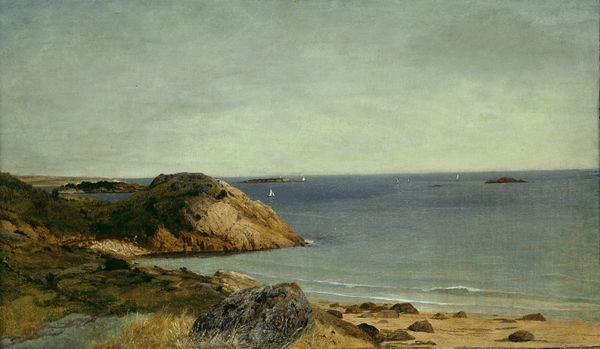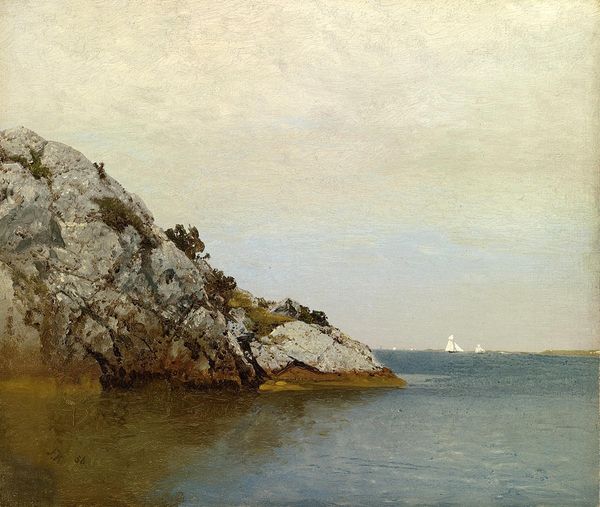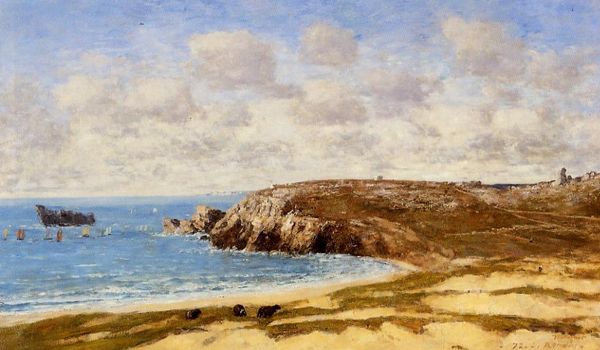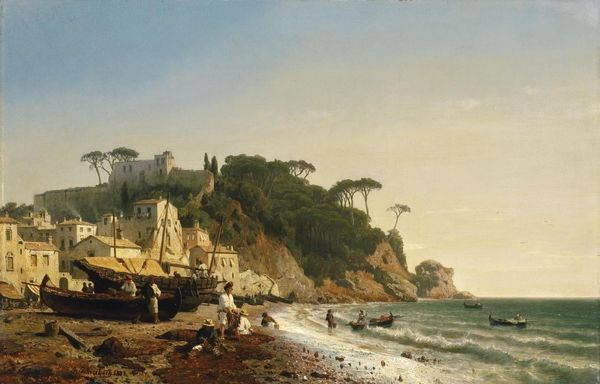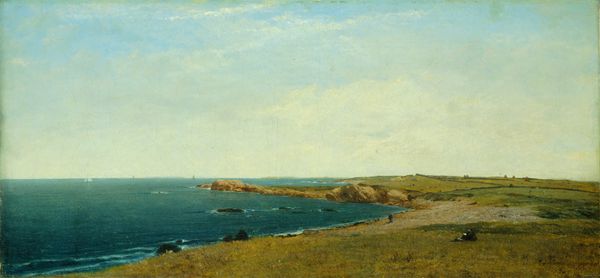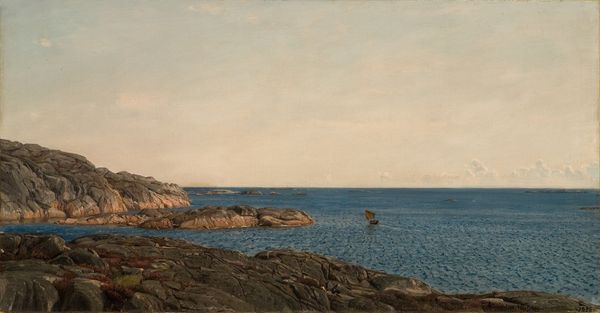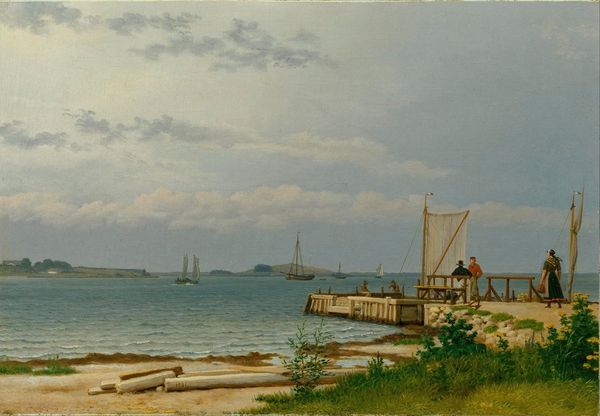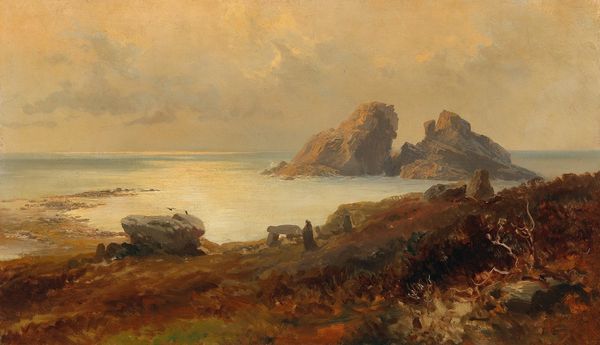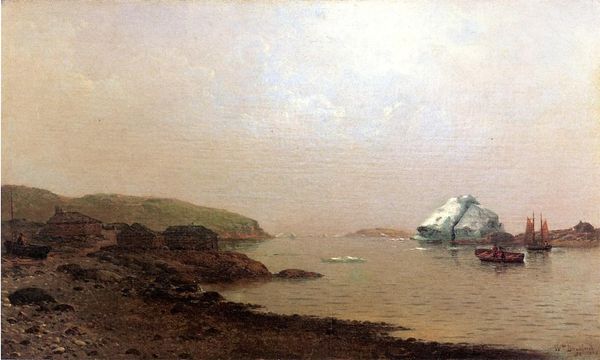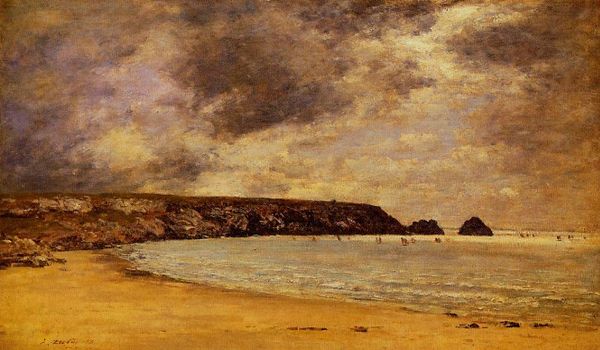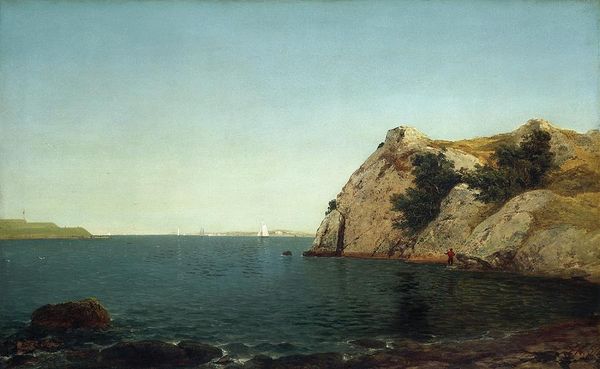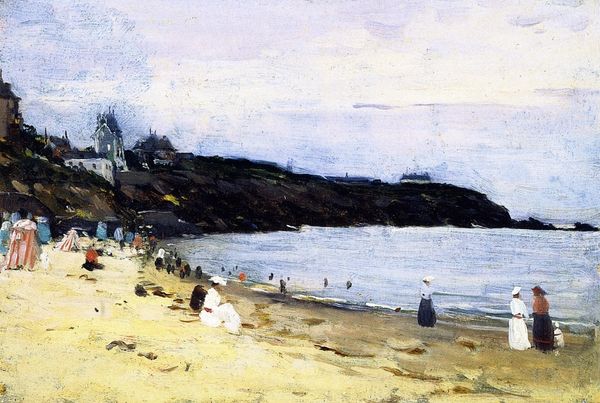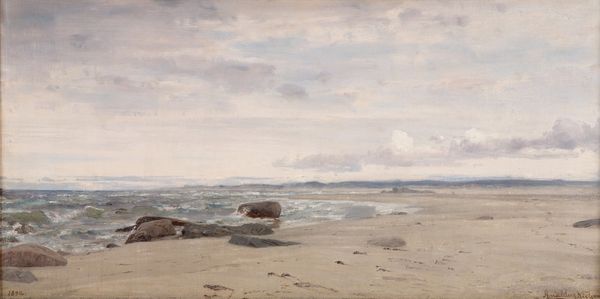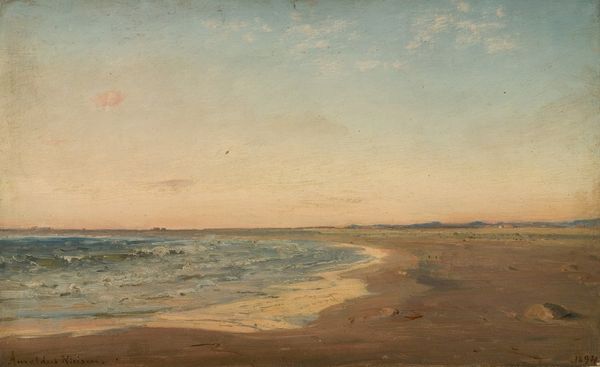
painting, plein-air, oil-paint
#
impressionism
#
painting
#
plein-air
#
oil-paint
#
landscape
#
oil painting
#
hudson-river-school
#
realism
Copyright: Public domain
Curator: What a peaceful scene. It really evokes a sense of tranquility, doesn't it? The vast expanse of the sky meeting the gentle curve of the beach, with those figures almost blending into the landscape...it's all rather calming. Editor: Absolutely. Let’s delve into this artwork. This is "View of the Beach at Beverly, Massachusetts." It is by John Frederick Kensett, an artist known for his contributions to the Hudson River School, specifically the Luminist style. He favored serene coastal scenes. Curator: Hudson River School is apt; I definitely see that focus on landscape, on this interplay between light and the water. The composition itself almost feels like it invites a meditation on the environment. I wonder how Kensett thought about depicting leisure in the burgeoning industrial era, with some possibly forced, leisure activities for factory workers. Editor: That’s a crucial question, framing it in its historical moment. These landscapes became increasingly popular in an urbanizing America. There’s this tension between industrial progress and nostalgia for an idealized nature, as well as concerns of racial identity for workers in this movement that you highlighted. He often painted scenes accessible by newly constructed railroads, democratizing access to these landscapes while subtly reinforcing certain class dynamics, what with leisure time and where and how people would vacation. The painting becomes a symbol of what America aspired to be and what it tried to deny. Curator: And even the way he depicts the light, it's almost as if the scene is being cleansed. Is Kensett's emphasis on detail here an implicit commentary on class mobility through the idealisation of landscape? How are women reflected? Were there beach holidays during this era in England, and who took them? So much to impact it all. Editor: His work also reveals changing environmental perceptions during this time. Early American landscape painting served to rationalize and endorse colonial expansion; here Kensett uses some artistic agency in a new age, painting a more mature scene that reflects a more modern environment for his characters. There’s that suggestion of the relationship between humans and their environment – perhaps suggesting more caution and preservation is necessary than has occurred in prior landscape paintings. Curator: Food for thought; this work does open up numerous interesting discussions. Thank you for sharing those key details that deepen our reading. Editor: It's been a pleasure. These layers certainly give this piece significance and continue to speak to present realities, particularly our relationship with nature.
Comments
No comments
Be the first to comment and join the conversation on the ultimate creative platform.
